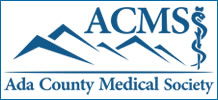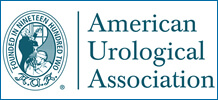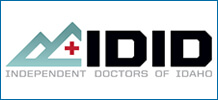In addition to being the season for sun and fun, summer is the season for kidney stones. The heat increases the likelihood that people become dehydrated. Dehydration leads to more concentrated urine, which can lead to stone formation by allowing for crystallization of the minerals normally found in the urine.
Kidney stones are generally asymptomatic until they start to pass from the kidney to the bladder. For the majority of people, passing a stone causes a great deal of pain, usually in the back and lower abdomen. The pain results from pressure in the kidney and ureter, which is caused by the stone obstructing the ureter.
The emergency room is where most kidney stones are diagnosed, as the pain generally is severe enough that patients will seek care there. The initial evaluation for a kidney stone includes imaging (most commonly, a CT scan), urinalysis and blood tests. Intravenous fluids and intravenous pain medications are given, and patients are sent home once their pain is controlled.
The majority of people will pass a kidney stone without requiring surgery, usually within a few days. Most stones are managed with pain medication and medications that relax the smooth muscle within the urinary tract and also increase the likelihood of passage.
Surgery is occasionally required to treat kidney stones. Indications for surgical intervention include stones that are too large or too numerous to pass, stones causing pain that is unmanageable and stones associated with infection.
Most stones requiring surgical treatment need only a minimally invasive procedure. The two most commonly performed procedures are extra-corporeal shock wave lithotripsy (ESWL) and ureteroscopy. Both procedures require general anesthesia, but both can be performed as an outpatient and do not require a hospital stay. ESWL is performed by focusing shock waves onto the stone, breaking it up into tiny fragments that are then passed. Ureteroscopy is performed by inserting a very small endoscope into the ureter and/or kidney and either removing the stone intact or breaking the stone into smaller fragments with a laser fiber and removing the fragments.
Up to one in 10 people in the United States will develop a kidney stone at some point during their lifetimes. Traditionally, men are at higher risk than women for developing stones, but the risk for women is rising more quickly than the rate of risk for men, narrowing the gap. Diet and the rising rate of obesity are felt to be the primary contributors for the increase in stone risk seen in the U.S. Once someone has experienced a kidney stone, there is up to a 50 percent chance that they will form another stone within the next five years.
Calcium oxalate is the most common type of stone, comprising 85 percent of the total number of stones in the U.S. Other stone types include calcium phosphate, uric acid, struvite and cystine.
Dehydration is among the most common contributing factors to stone formation. Anyone who has had a kidney stone should be consuming between 8 and 12 glasses of fluids daily, concentrating primarily on water, rather than soda or other beverages. Dietary factors and genetics can also contribute to stone formation. Up to one in four people with a history of kidney stones have at least one relative with kidney stones.
Dietary calcium is an uncommon cause of kidney stone formation, and it is generally recommended that patients with a history of stones maintain a diet with a daily calcium intake of 800 to 1,200 milligrams. (An 8-ounce glass of milk has 300 mg.)
Identifying a cause for a particular patient’s kidney stone includes having the stone analyzed and a 24-hour urine test. Oftentimes, blood tests will also be necessary.
Excessive urinary calcium contributes to kidney stone formation for many patients. It can be caused by a defect in the way that the kidney handles calcium (known as a “renal calcium leak”) and can be treated with medication. Other reasons for excessive urinary calcium include excessive dietary sodium and an overactive parathyroid gland, which is a small gland in the neck responsible for regulating our body’s calcium metabolism.
Occasionally, diet changes will be recommended based on the evaluation. Too much sodium in the diet is among the most common causes of kidney stone formation in the U.S., and having an appropriate dietary sodium level can significantly reduce the level of calcium in the urine, thereby decreasing the chance of recurrent stone formation. For some patients, overconsumption of foods that are high in oxalate leads to stone formation, and their risk of further stones can be reduced by modifying consumption of these foods.
Kidney stones are an unpleasant part of summer, but with proper evaluation and management by your urologist, they don’t have to be a part of your summer!
Dr. Todd Waldmann is a founding partner and current president of Idaho Urologic Institute. He is a board-certified urologist and urologic robotic surgeon. He also is a member of the American Urologic Association, the Ada County Medical Society and the Idaho Medical Association. Waldmann is a diplomate of the American Board of Urology.
Learn more about Idaho Urologic Institute at idurology.com









